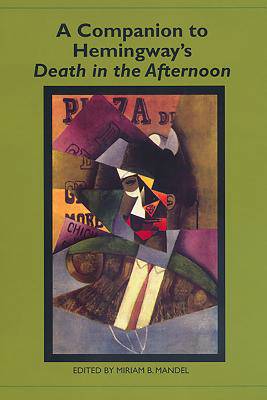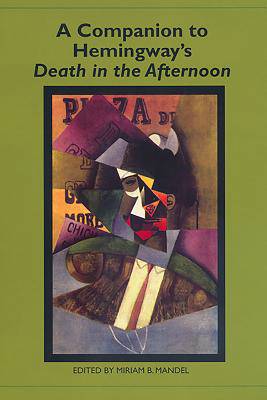
- Retrait gratuit dans votre magasin Club
- 7.000.000 titres dans notre catalogue
- Payer en toute sécurité
- Toujours un magasin près de chez vous
- Retrait gratuit dans votre magasin Club
- 7.000.0000 titres dans notre catalogue
- Payer en toute sécurité
- Toujours un magasin près de chez vous
A Companion to Hemingway's Death in the Afternoon
145,45 €
+ 290 points
Description
Published in 1932, Death in the Afternoon reveals its author at the height of his intellectual and stylistic powers. By that time, Hemingway had already won critical and popular acclaim for his short stories and novels of the late twenties. A mature and self-confident artist, he now risked his career by switching from fiction to nonfiction, from American characters to Spanish bullfighters, from exotic and romantic settings to the tough world of the Spanish bullring, a world that might seem frightening and even repellant to those who do not understand it. Hemingway's nonfiction has been denied the attention that his novels and short stories have enjoyed, a state of affairs this Companion seeks to remedy, breaking new ground by applying theoretical and critical approaches to a work of nonfiction. It does so in original essays that offer a thorough, balanced examination of a complex, boundary-breaking, and hitherto neglected text. The volume is broken into sections dealing with: the composition, reception, and sources of Death in the Afternoon; cultural translation, cultural criticism, semiotics, and paratextual matters; and the issues of art, authorship, audience, and the literary legacy of Death in the Afternoon. The contributors to the volume, four men and seven women, lay to rest the stereotype of Hemingway as a macho writer whom women do not read; and their nationalities (British, Spanish, American, and Israeli) indicate that Death in the Afternoon, even as it focuses on a particular national art, discusses matters of universal concern.Contributors: Miriam B. Mandel, Robert W. Trogdon, Lisa Tyler, Linda Wagner-Martin, Peter Messent, Beatriz Penas Ibáñez, Anthony Brand, Nancy Bredendick, Hilary Justice, Amy Vondrak, and Keneth Kinnamon.Miriam B. Mandel teaches in the English Department of Tel Aviv University.
Spécifications
Parties prenantes
- Editeur:
Contenu
- Nombre de pages :
- 359
- Langue:
- Anglais
- Collection :
Caractéristiques
- EAN:
- 9781571132024
- Date de parution :
- 01-10-04
- Format:
- Livre relié
- Format numérique:
- Genaaid
- Dimensions :
- 164 mm x 235 mm
- Poids :
- 693 g

Les avis
Nous publions uniquement les avis qui respectent les conditions requises. Consultez nos conditions pour les avis.





